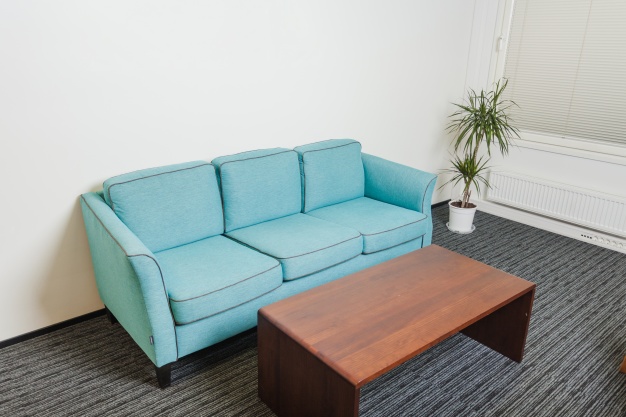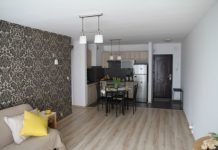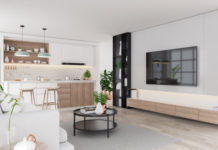Carpeted flooring is not new to the world of home designing, its popularity is lower than other flooring designs. Wall-to-wall carpeting completes the look of the room and enhances the entire décor.
Using the carpet to cover the flooring would make your house more inviting and cozy. However, before you think of covering your entire home flooring with a carpet, check out the pros and cons of the same.
Being aware of both the benefits and drawbacks of carpeted floors can help you maintain them and make use of them for maximum enjoyment.
Carpeting can Aggravate Allergy Symptoms
Unfortunately, the fibers in carpeting can play host to dust, dirt, bugs and bacteria. Therefore, if you suffer from allergies due to dust mites or similar allergens, carpeting can certainly present a problem.
Likewise, if you or anyone in your family suffers from any respiratory conditions such as asthma, a carpeted floor will do little to alleviate the symptoms.
If this happens to be the case in your household, removing the carpeting is probably the best remedy, especially if the carpet is located in an area that is used quite frequently.
Also, if water damage occurs, carpeting typically must be removed. Mold and mildew can develop in the padding and cause allergy sufferers as well as those people not quite as susceptible to allergies to become quite sick.
Smell and Stain Removal is More Difficult on Carpeted Floors
Although many carpets are treated with chemicals that prevent stains, such treatments can’t eradicate all stains, especially those from pets. If a dog or cat urinates on the carpet or worse, then the stain or resulting smell can be hard to remove.
In such situations, laminate flooring is a better option as this type of floor is stain-resistant and much easier to maintain than a carpeted floor if you’re faced with a difficult stain.
Carpeting Provides a Reduction in Energy Costs
If you want to reduce your energy consumption, then carpeting is a good choice as this type of flooring provides insulation in the winter and the summer. Carpeting provides a barrier that keeps chill drafts or outside heat from seeping through the floor. Therefore, your apartment uses less energy for cooling or heating and your utility bills are lower too.
Carpeting is Useful in Soundproofing your Apartment
Carpeting is a select flooring to use if you want to minimize sound. The flooring is helpful in reducing the echoing effects of foot traffic or conversation. Therefore, sounds resulting from everyday activities as well as the noises emitted from the television or radio are reduced. If you want to enjoy a more peaceful environment, then carpeting is preferable over other types of flooring.
Carpeting is a Select Choice for most Decors
Regardless of the drawbacks, carpeting still can be used in decorating an apartment and enhancing the look of any room to a significant degree. Many styles and designs of carpeting are available to complement the interior of an apartment home. You can choose from a number of textures and fibers such as nylon, olefin or wool to create the look you want. For example, Berber carpeting, which is made with two or more colors, is a durable carpet that is ideal for most decorating themes.
You can select from a variety of piles, such as cut pile, frieze or loop which can be easily color-coordinated with a room’s decor. With the various styles and designs of carpeting available, you can substantially improve the aesthetics of individual rooms and make your apartment a more desirable and cozy place in which to live.
Pros of Carpeting
- Softness: The biggest appeal to carpeting is that it is soft and feels great beneath bare feet This is particularly soothing in bedrooms, children’s rooms, and some family and living room areas, where you want to promote an atmosphere of comfort and relaxation.
- Warmth: Carpet is going to be much warmer than hardwood floors, especially on a chilly winter morning. It acts not only like a blanket for your feet, but it also helps to insulate the room, ensuring that warmth remains indoors and doesn’t slip through more porous flooring materials. Dense carpeting with a quality bonded polyurethane padding beneath can create an R-value of 4 or more, meaning that the warmth carpeting lends to a room is very real.
- Physical comfort: The fact that it is soft and warm makes carpet just about the most comfortable flooring material you can stand on. This can be especially important when standing for long periods, where harder wood floors can cause pain in feet, ankles, and knees. Good carpeting with a dense foam underlayment is much more comfortable floor than hardwood.
- Economical: Most carpet is considerably less expensive than most hardwood materials. And although carpeting does need to be replaced every few years, perfectly acceptable carpeting may be available for less than $1.00 per square foot. Solid hardwoods, on the other hand, start at around $4.00 per square foot and go up from there.
- Safety: The fact that it is so soft makes carpet a particularly safe flooring choice. With hardwood, a trip or fall can result in injuries and broken objects. With carpet, though, you have a cushion running across the entire room, making damage from an accident much less likely. This can be a strong consideration in homes with small children or elderly residents.
- Sound-deadening: A major complaint about hardwood floors is that they are loud. When installed on upper levels, people below often complain that they can hear every footstep. An old installation may also squeak in certain spots. With carpeting, though, the surface of the entire floor is padded and insulated so that noise won’t easily pass up or down.
- Friendly to children: Carpeting is great if you have kids because the surface provides a comfortable, safe cushioned surface on which to play. Falls on carpeting are much less traumatic than on hardwood.














